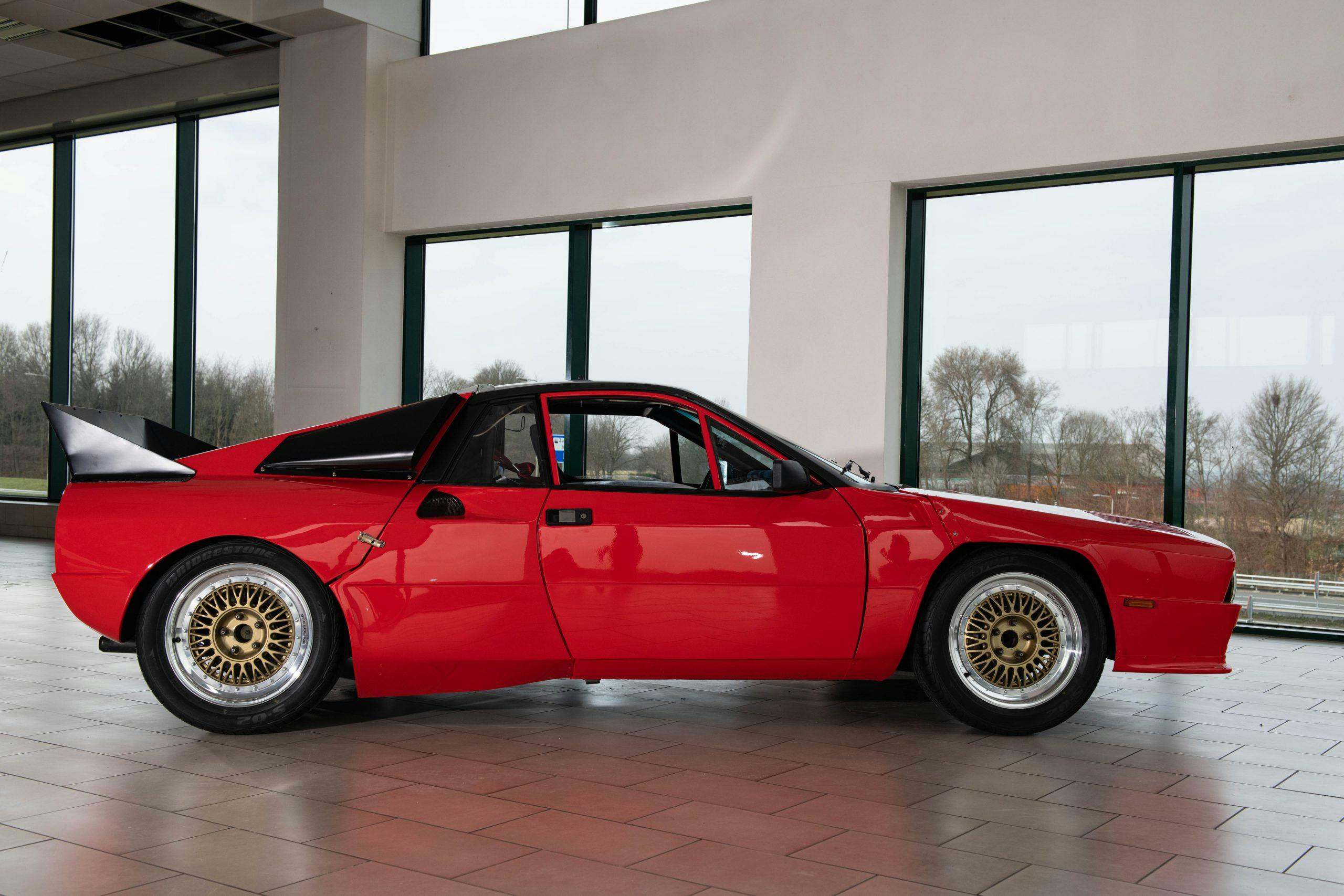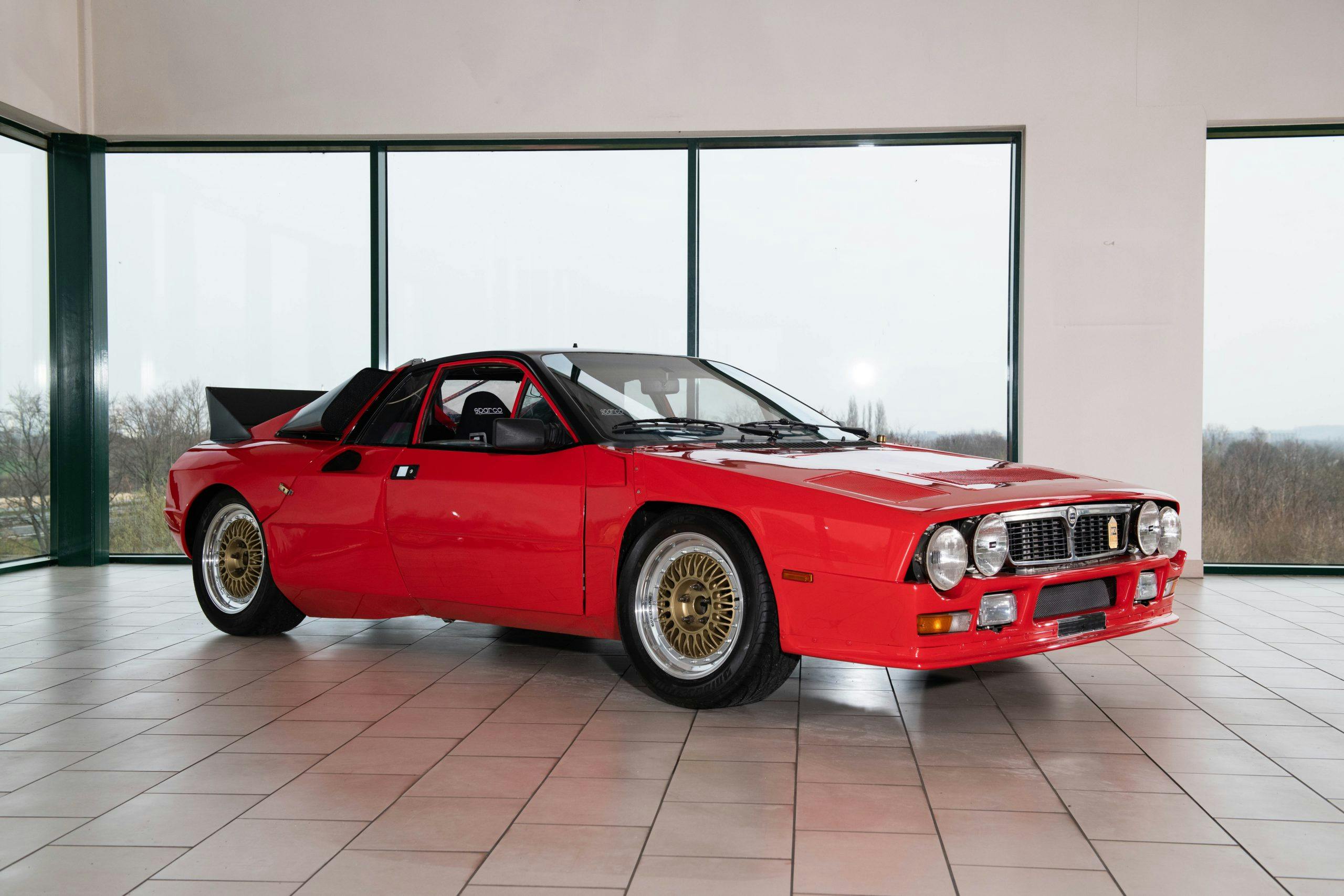Media | Articles
Lancia’s original 037 rally prototype acknowledges Abarth’s engineering contributions
The 1980 Lancia 037 Prototype offered by RM Sotheby’s at its Milan auction in June has all the important prototype characteristics. Ill-fitting bodywork with big panel gaps. Massive experimental-looking wings and intakes. An interior decorated with fuses, empty mounting points, and switches—some of which are even labeled.
Look closer though and you see something else: An Abarth, nearly identical to the Lancia-badged rally car that would win the 1983 World Rally Championship.

Lancia is well known for its rallying success, and deservedly so—from 1972 to 1992, the brand earned 11 world constructors’ championships. But it had help. Abarth, which had operated for decades as a semi-independent tuner and racing outfit, officially became a subsidiary of Fiat in 1971. Fiat gradually wound down Abarth’s production cars and, in 1977, put it in charge of Lancia’s racing efforts.
The dawn of the Group B era in the early 1980s put this collaboration to the test. Abarth investigated what could be quickly made competitive while taking advantage of the racing class’s (now notorious) leeway in the specs. Renault had revealed the R5 Turbo, a hatchback with its engine moved to where the rear seats used to be. Abarth looked into following a similar path, starting with the mid-engine, four-cylinder, Lancia Montecarlo (aka the Scorpion in the U.S.). While much of the Montecarlo didn’t carry over to the 037, it did provide the passenger cell and the basic shape.

Wedged inside the boxy bodywork was a longitudinally-mounted, 16-valve 2.0-liter Fiat Twin Cam four, upgraded with a single Weber carburetor and Abarth supercharger. A supercharger was chosen because turbocharger technology was viewed as being too laggy at the time, which meant it wouldn’t provide the throttle response needed by rally drivers. Later variants would add fuel injection and a bit more displacement, bring the original 255 hp (sent through a five-speed manual transmission and self-locking differential) to as much as 325 hp.
Marketplace
Buy and sell classics with confidence
This car, the 037-001, was built by Dallara in September 1980. By December it was on the test track, and by January it was in the wind tunnel at Pininfarina. The car would not be shown to the public, though. The 037 that was shown to the press, chassis 005, looked very much like a Lancia, down to its white-with-Martini-stripes livery.
Chassis 037-001, on the other hand, still wears signs of its Abarth origins. The Abarth lettering remains on the left rear corner. Both the steering wheel and the intake are Abarth items. It is painted red, rather than the white Lancia used for its rally cars. At the front, the Lancia grille seems to be a size too small for the opening.

Lancia put the 037 to good use when it won the 1983 World Championship for Manufacturers. The speed at which the project was developed was rewarded too, because it was the last time a rear-wheel-drive car would win the title.
What is the prototype likely to sell for at auction? Chassis 037-001 has crossed the block before, when in 2016 it was a no-sale at Bonhams’ Monte Carlo auction, with an estimate of $360,000 to $450,000. However, Lancia 037 Stradales have approached $1 million in recent years, with the record at $867,117, which was set in 2019 at RM Sotheby’s Essen auction. Perhaps, despite its confused branding, chassis 037-001 will be recognized for its historical significance and set a new record.






































